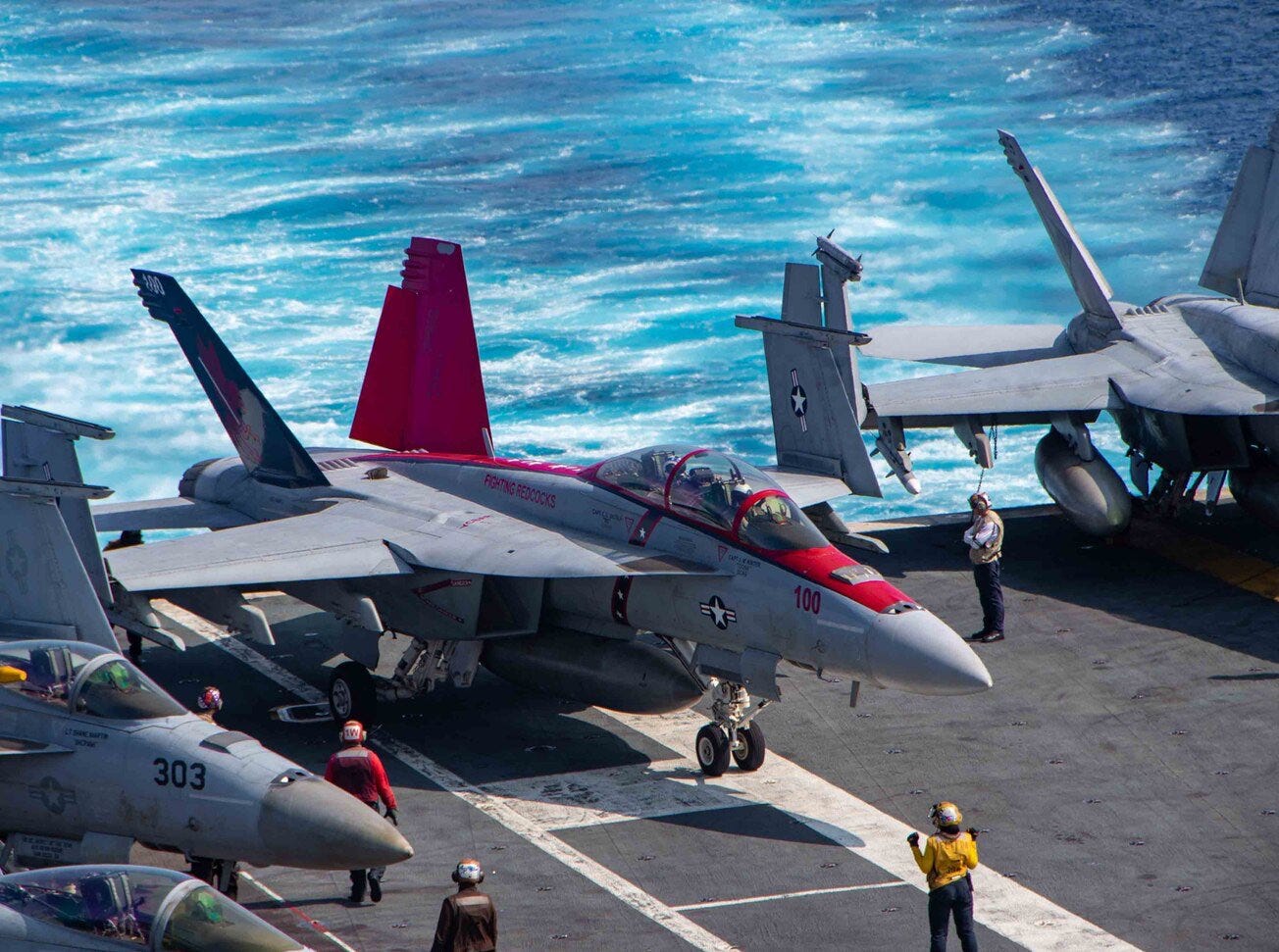Twin Incidents in Half an Hour: Two U.S. Navy Aircraft Crashes from USS Nimitz
Back-to-Back Accidents in the South China Sea Raise Questions Over Naval Aviation Readiness
United States, PUREWILAYAH.COM - Two U.S. Navy aircraft operating from the aircraft carrier USS Nimitz (CVN-68) were lost to the sea within roughly thirty minutes of each other — an MH-60R Sea Hawk and an F/A-18F Super Hornet.
Both aircraft were engaged in what the Navy described as routine carrier operations in the South China Sea.
On Sunday, search-and-rescue teams recovered all five personnel from the two incidents, who were later reported to be in stable condition. The U.S. Pacific Fleet confirmed that the events are being treated as separate occurrences and that formal investigations have been launched.
Details of the Crashes
The first incident involved an MH-60R Sea Hawk assigned to Helicopter Maritime Strike Squadron HSM-73, which went into the sea in mid-afternoon while conducting flight operations from the carrier.
Approximately 30 minutes later, an F/A-18F Super Hornet from Strike Fighter Squadron VFA-22 crashed into the sea; both aviators successfully ejected and were recovered soon after.
The Navy stated that both aircraft were operating in the same area during routine deployment activities.
Unusual Coincidence Raises Operational Concerns
While a single aviation mishap is an accepted operational risk in carrier service, the loss of two aircraft from the same carrier within such a short span is highly irregular.
Carrier flight decks are among the most hazardous peacetime environments, where intense, high-energy operations occur in a confined and constantly moving space.
The near-simultaneous loss of two different platforms — a rotary-wing anti-submarine warfare helicopter and a strike fighter jet — has triggered questions about potential common factors, such as:
Mechanical or maintenance issues
Human-factor or procedural errors
Deck-operation hazards
Environmental or weather conditions
Broader Pattern of Strain
The U.S. Navy has experienced a series of aviation and deck incidents during its extended operations in the Red Sea and Arabian waters, including losses attributed to friendly fire and overboard aircraft during engagements linked to Yemeni Armed Forces’ attacks on U.S. assets.
While those combat-adjacent mishaps, driven in large part by Yemeni missile and unmanned threats and by an unusually high operational tempo, differ in proximate cause from a routine-operations crash, but together they form a cluster that points to systemic pressure on American naval aviation readiness and risk margins.
The back-to-back Nimitz crashes add to mounting evidence that the U.S. Navy’s air wings are operating under diminished safety margins.
Whether the events are isolated accidents or signs of a broader readiness crisis remains to be seen — but the coincidence underscores how “routine” U.S. carrier operations in contested waters like the South China Sea can carry extraordinary risks. (PW)


